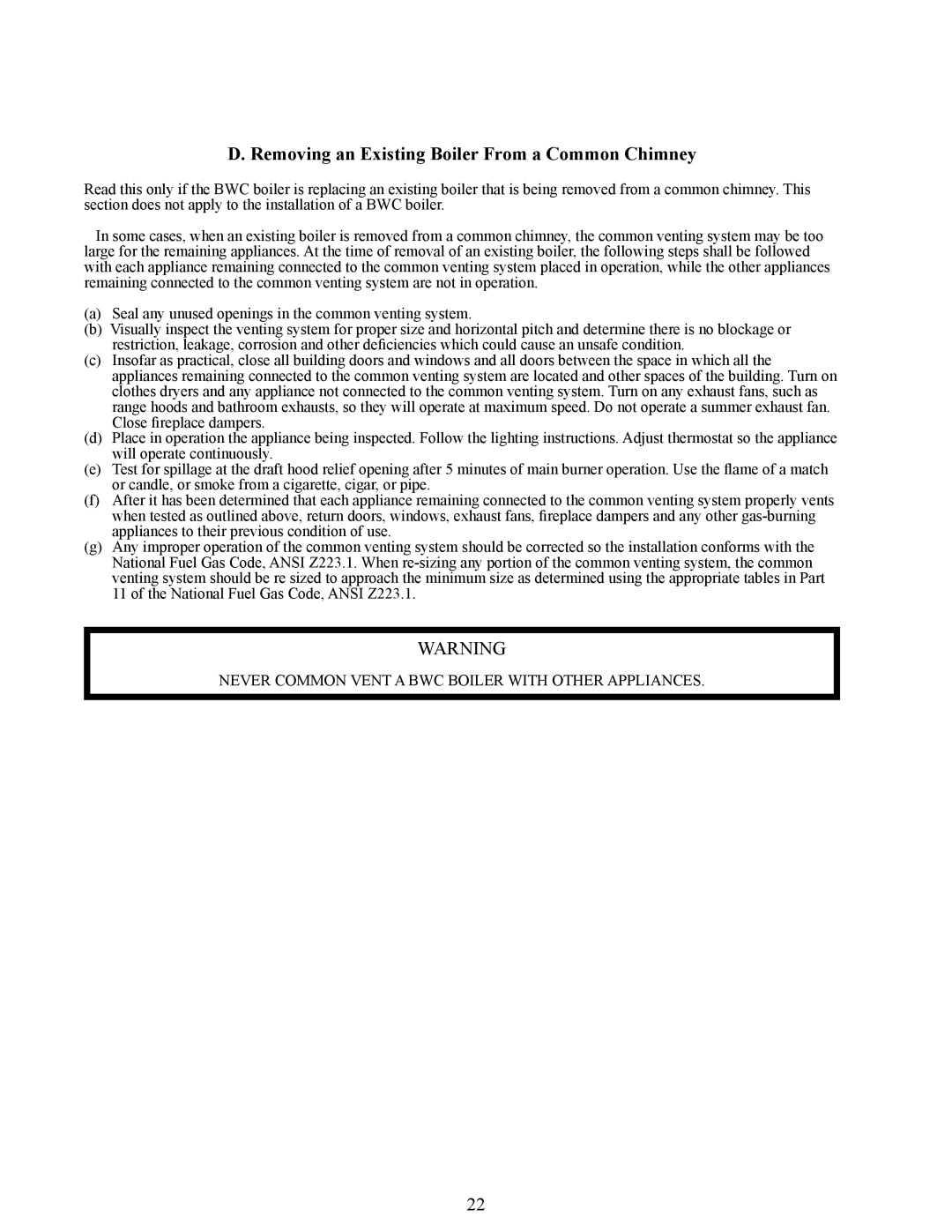BWC225, BWC150 specifications
The Crown Boiler BWC series, specifically the BWC150 and BWC225 models, are renowned for their performance and efficiency in residential and commercial heating applications. These boilers are designed to provide optimal heating while ensuring reliability and user-friendliness.A standout feature of the BWC series is its high efficiency. Both the BWC150 and BWC225 are equipped with cutting-edge technology that maximizes energy use, effectively reducing operating costs. Their design utilizes a modulating burner, which adjusts the heat output based on demand. This modulation not only enhances comfort levels by maintaining a steady temperature but also conserves energy, making these models eco-friendly options.
The BWC series incorporates a durable cast-iron heat exchanger, known for its longevity and excellent heat transfer capabilities. This feature ensures that the boilers can withstand the rigors of daily operation while delivering consistent performance over time. Furthermore, the built-in control systems allow for precise monitoring and adjustment, ensuring that users have access to real-time information about their heating systems.
Another notable characteristic is the compact design of these boilers. The BWC150 and BWC225 fit seamlessly into various spaces, making them ideal for both new installations and replacements in existing systems. The straightforward installation process is a significant advantage for contractors and homeowners alike, saving time and resources.
Moreover, safety is a priority in the design of the BWC series. Each model includes multiple safety features, including low water cut-off, high-temperature limit control, and pressure relief valves. These features not only protect the boiler itself but also ensure the safety of the home or building in which it operates.
The Crown Boiler BWC series also boasts compatibility with various heating systems, including hot water baseboard, radiators, and in-floor heating, providing versatility to meet different heating needs. Its user-friendly interface and control options make it accessible to users, whether they are tech-savvy or not.
In conclusion, the Crown Boiler BWC150 and BWC225 models offer a combination of energy efficiency, robust construction, and advanced technology. With their modulating burners, durable heat exchangers, compact design, and safety features, these boilers are an excellent choice for anyone looking to invest in a reliable heating solution.

